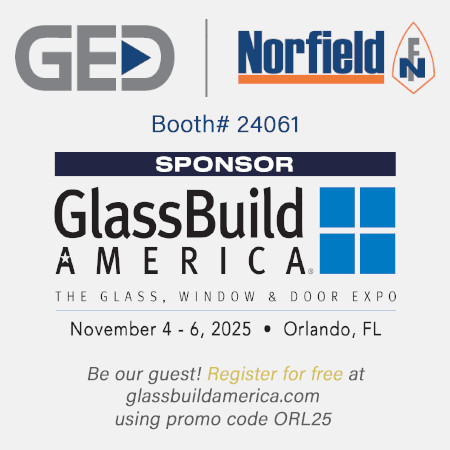Previous installments in this series (click here and here) noted the critical role sealants and flashing play in achieving proper integration of the window or door unit with a building’s drainage plane, or roof-to-ground weather resistant barrier (WRB). Here, we will take a closer look at the variables informing the proper selection and application of these key elements.
Looking at a common window mounting type as an example—i.e. those with a mounting flange—AAMA 2400, Standard Practice for Installation of Windows with a Mounting Flange in Wood Frame Construction for Low Wind/Water Exposure, recommends a process for applying flashing and sealing materials to establish an effective moisture barrier.
Flashing
Flashing bridges the joint between the product frame and the adjacent WRB. There are four basic types of flashing products used for installing windows and doors. AAMA has developed standards that are required by the building codes for these flashing materials, as follows.
-
Mechanically Attached Flexible Flashing (AAMA 712) must be fastened to the building using staples or button-cap nails in conjunction with appropriate sealants.
-
Self-Adhering Flexible Flashing (AAMA 711) is coated on at least one side with a pressure-sensitive adhesive and comes with a release liner that is removed prior to application.
-
Liquid-Applied Flashing (AAMA 714), applied by spray, brush, trowel or other similar means.
-
Rigid Flashing, often custom-made to fit the window or door’s rough opening, pre-molded and sealed together in pieces in the field.
Of these, the two that have become most common due to their relative simplicity of application are the self-adhering and liquid-applied varieties.
To save time and develop an efficient installation process, self-adhering and mechanically applied flashing can be cut to length in advance using the rough opening dimensions and the formulas listed below. When using mechanically applied flashing, cutting the flashing in advance also reduces the chance for the sealant to “skin over” prior to the application of the flashing.
-
Sill flashing: rough opening width + 2x flashing width
-
Jamb flashing: rough opening height + 2x flashing width - 1 inch
-
Head flashing: rough opening width + 2x flashing width + 2 inches
It is important to note that simply cutting flashing to the correct length will not result in a quality installation. The flashing must be applied in the proper sequence and successfully integrated with the WRB to ensure water is moved down and away from the structure.
Through laboratory testing, self-adhering and liquid-applied flashing must each demonstrate acceptability for use under expected field exposure conditions. These are set forth in AAMA 711, Voluntary Specification for Self-Adhering Flashing Used for Installation of Exterior Wall Fenestration Products, and AAMA 714-19, Voluntary Specification for Liquid-Applied Flashing Used to Create a Water-Resistive Seal around Exterior Wall Openings in Buildings. Both describe test methods (typically referencing ASTM test standards) used to simulate field conditions and specify minimum performance requirements such as: adhesive strength, exposure to elevated temperatures, cold temperature (-18°C [0°F]) pliability, UV aging, water penetration resistance around nails, and crack-bridging ability. They also categorize flashings by the level of environmental exposure they are designed to withstand. Level 1 is for exposures up to 50°C (122°F), Level 2 for exposures up to 65°C (149°F) and Level 3 for exposures up to 80° C (176°F).
Sealants
The key characteristics to consider when choosing the right sealant are adhesion to the wide variety of materials encountered in a building envelope, expected joint movement (due to thermal expansion, wind load, settling of the structure, seismic activity, etc.) and compatibility with surrounding materials (flashing, other sealants, gaskets, etc.). Meanwhile, they must withstand attack from water and ultraviolet radiation while retaining physical properties as they age. For materials which could be impacted, the appropriate protection (such as paint) should also be incorporated in the installation.
AAMA 808.3 (Section 5 of AAMA 800, Voluntary Specifications and Test Methods for Sealants) covers compounds classified as Type I, pumpable and gunnable compounds, or Type II, pre-formed, ductile, extruded or calendared mastic type tapes. These must pass tests for performance attributes such as peel adhesion, slump or sag, low temperature flexibility and water resistance.
Installation and the components used therein are a major focus of AAMA standards and guidelines (such as those referenced above), as well as educational programs, as each is important to realizing the design intent and tested performance of fenestration products. See the AAMA Online Store at aamanet.org/store for the former, and look into the InstallationMasters training and credentialing program at installationmasters.com.






